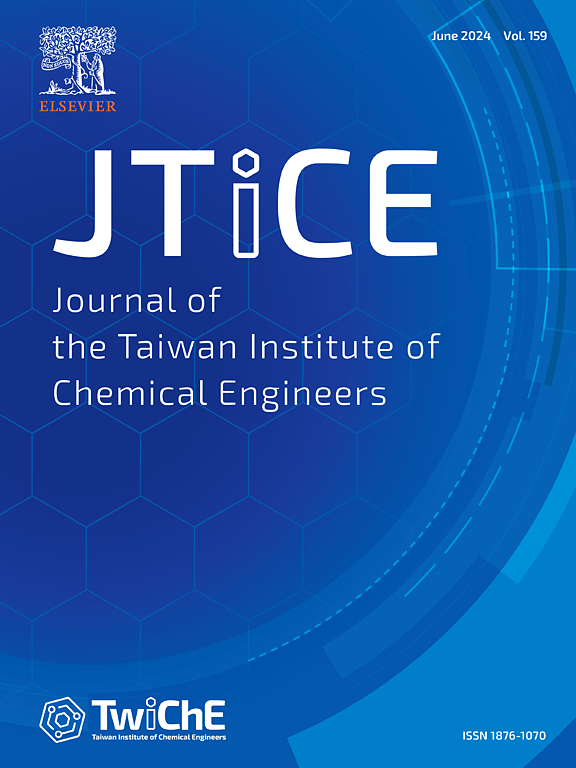Eco-Friendly halogen-free composite for humidity control: Application in environmental humidity regulation
IF 5.5
3区 工程技术
Q1 ENGINEERING, CHEMICAL
Journal of the Taiwan Institute of Chemical Engineers
Pub Date : 2025-04-15
DOI:10.1016/j.jtice.2025.106143
引用次数: 0
Abstract
Background
The demand for effective indoor humidity control has led to the development of innovative materials, yet many existing solutions are limited by the release of harmful substances during production and high costs.
Methods
To address these limitations, we developed an environmentally friendly composite material composed of sodium alginate, silica gel, and inorganic salts. This halogen-free composite demonstrates high moisture absorption rates and rapid response to humidity fluctuations, making it ideal for application in artifact preservation, food storage, and electronics protection. Various analytical techniques, including scanning electron microscopy, Fourier-transform infrared spectroscopy, thermogravimetric analysis, and Brunauer-Emmett-Teller specific surface area testing, were employed to characterize the structural properties and composition of the material.
Significant Findings
Our findings reveal that the composite can stabilize air humidity between 65 % and 70 % relative humidity (RH) at 25 °C within 4 h and maintain this level for over 25 h. The material also exhibits a high moisture absorption capacity of up to 448.96 % of its weight, along with notable efficiency in moisture desorption.

环保无卤调湿复合材料:在环境湿度调节中的应用
对有效的室内湿度控制的需求导致了创新材料的发展,但许多现有的解决方案受到生产过程中有害物质释放和高成本的限制。方法针对这些局限性,我们开发了一种由海藻酸钠、硅胶和无机盐组成的环保型复合材料。这种无卤素复合材料具有高吸湿率和对湿度波动的快速响应,使其成为人工制品保存,食品储存和电子产品保护的理想应用。各种分析技术,包括扫描电子显微镜、傅里叶变换红外光谱、热重分析和布鲁诺尔-埃米特-泰勒比表面积测试,被用来表征材料的结构性能和组成。研究结果表明,在25°C条件下,该复合材料可以在4小时内将空气相对湿度稳定在65%至70%之间,并保持该水平超过25小时。该材料还具有高达其重量448.96%的高吸湿能力,同时具有显着的吸湿效率。
本文章由计算机程序翻译,如有差异,请以英文原文为准。
求助全文
约1分钟内获得全文
求助全文
来源期刊
CiteScore
9.10
自引率
14.00%
发文量
362
审稿时长
35 days
期刊介绍:
Journal of the Taiwan Institute of Chemical Engineers (formerly known as Journal of the Chinese Institute of Chemical Engineers) publishes original works, from fundamental principles to practical applications, in the broad field of chemical engineering with special focus on three aspects: Chemical and Biomolecular Science and Technology, Energy and Environmental Science and Technology, and Materials Science and Technology. Authors should choose for their manuscript an appropriate aspect section and a few related classifications when submitting to the journal online.

 求助内容:
求助内容: 应助结果提醒方式:
应助结果提醒方式:


